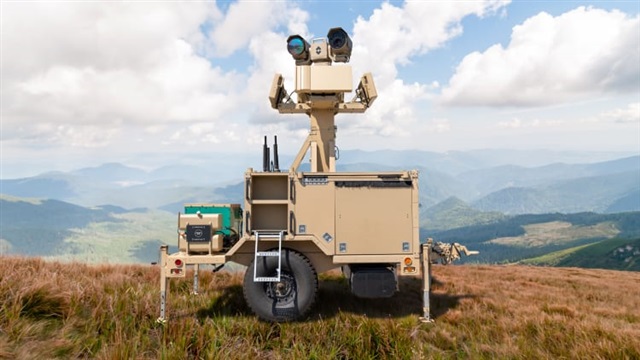The global counter-drone systems market is projected to reach US$14.32 billion by 2032 as small unmanned aerial vehicles transform modern warfare, driving demand for detection and neutralization technologies among military and security agencies worldwide.
Small drones' low cost, stealth capabilities, and infiltration ease have created new security vulnerabilities demonstrated in the Russia-Ukraine conflict, prompting governments to accelerate counter-unmanned aerial systems development. The US Department of Defense launched its Replicator 2 program in September 2024, focusing exclusively on counter-small drone technologies using artificial intelligence for detection and neutralization.
The Pentagon's strategy emphasizes layered defense solutions combining radar, radio frequency analyzers, optical sensors, and acoustic detection systems. Companies including Lockheed Martin, Teledyne FLIR, and Anduril Industries are developing integrated platforms capable of identifying, tracking, and disabling small drones threatening critical infrastructure and military installations.
Detection technologies range from passive radio frequency analyzers and acoustic sensors to active radar systems, with artificial intelligence improving accuracy in distinguishing drones from birds, aircraft, and commercial unmanned vehicles. Advanced systems can identify specific drone models and digital fingerprints, including controller hardware addresses.
Countermeasure approaches include physical destruction through missiles, gunfire, and high-powered laser weapons, alongside neutralization methods using GPS spoofing, radio frequency jamming, and network takeover systems. However, most jurisdictions restrict destructive measures outside military zones to prevent collateral damage to civilian aircraft and infrastructure.
The US Senate Armed Services Committee's National Defense Authorization Act requires Pentagon cooperation with Taiwan on unmanned vehicle technologies, while defense startups Anduril and Skydio have visited Taiwan seeking supply chain partnerships. Taiwan is introducing Lockheed Martin's AN/MPQ-64F1 Sentinel radar system, currently deployed along the US-Mexico border for ultra-low altitude drone detection.
Military analysts note that emerging quantum sensing technology promises to overcome traditional sensor limitations by enhancing sensitivity and precision, potentially revolutionizing drone detection capabilities as nations confront evolving asymmetric warfare threats.
Teledyne FLIR's Cerberus XL system is undergoing combat validation in Ukraine, demonstrating real-world applications of integrated radar, electro-optical infrared, and radio frequency detection methods. The company participates in the Pentagon's Replicator 2 program and has supplied thermal imaging products to Taiwan's Coast Guard Administration.
Article edited by Jack Wu




